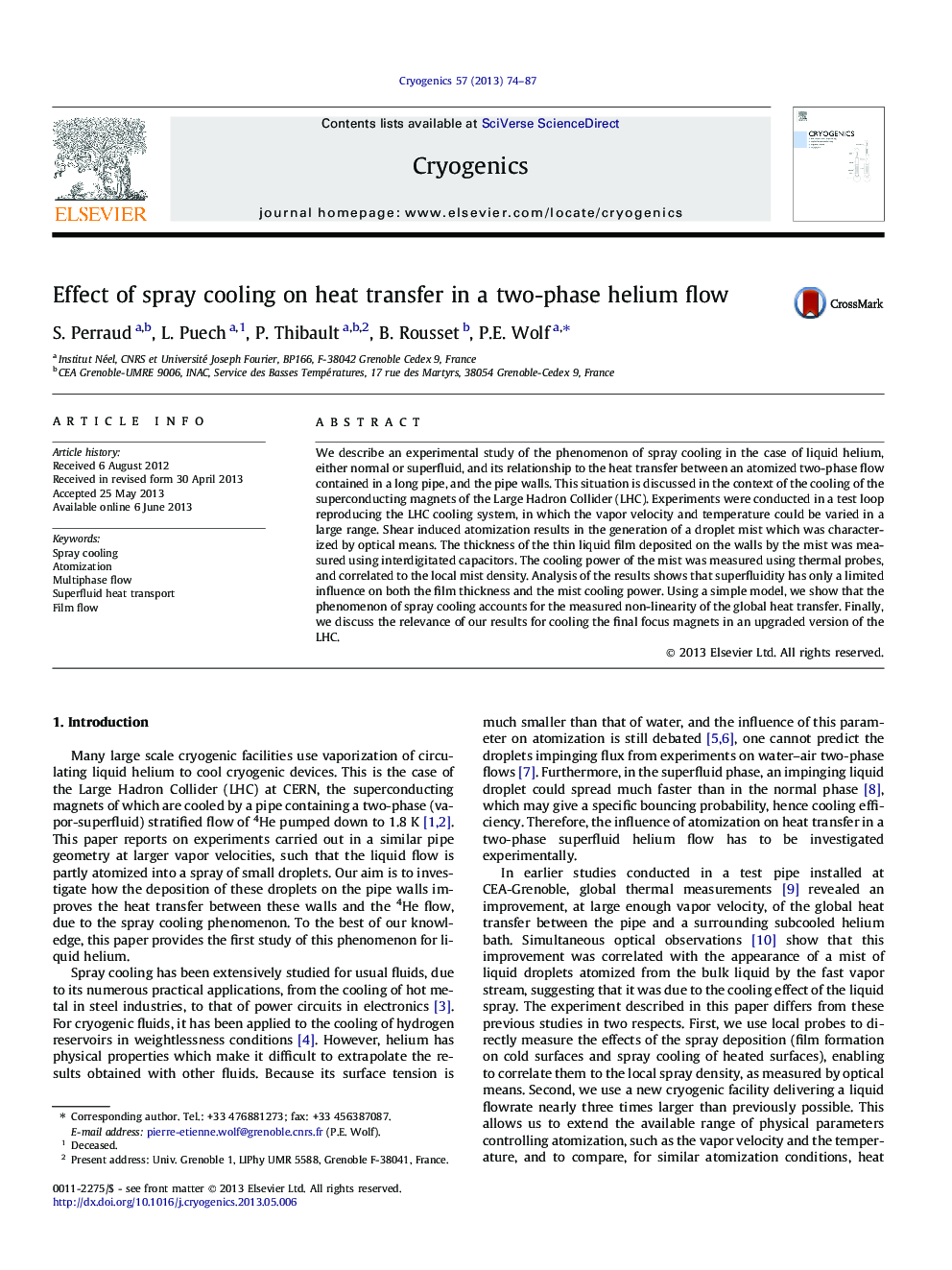| Article ID | Journal | Published Year | Pages | File Type |
|---|---|---|---|---|
| 1507617 | Cryogenics | 2013 | 14 Pages |
•We have studied heat transfer between an atomized diphasic helium flow and walls.•This study is relevant to the cooling of the LHC superconducting final focus magnets.•The droplet mist and the deposited film were measured by optical and capacitive means.•The experimental non-linear global heat transfer is explained by spray cooling.•Superfluidity has a limited influence on the mist cooling power.
We describe an experimental study of the phenomenon of spray cooling in the case of liquid helium, either normal or superfluid, and its relationship to the heat transfer between an atomized two-phase flow contained in a long pipe, and the pipe walls. This situation is discussed in the context of the cooling of the superconducting magnets of the Large Hadron Collider (LHC). Experiments were conducted in a test loop reproducing the LHC cooling system, in which the vapor velocity and temperature could be varied in a large range. Shear induced atomization results in the generation of a droplet mist which was characterized by optical means. The thickness of the thin liquid film deposited on the walls by the mist was measured using interdigitated capacitors. The cooling power of the mist was measured using thermal probes, and correlated to the local mist density. Analysis of the results shows that superfluidity has only a limited influence on both the film thickness and the mist cooling power. Using a simple model, we show that the phenomenon of spray cooling accounts for the measured non-linearity of the global heat transfer. Finally, we discuss the relevance of our results for cooling the final focus magnets in an upgraded version of the LHC.
